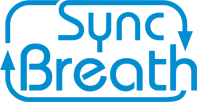Breath of Fire
In this rigorous exercise, I activate my abdominal muscles and force air out abruptly through my nose. The exercise improves my lung flexibility and strengthens my abdominal muscles.
I breathe rapidly, continuously, and rhythmically, with the focus on the exhale. Even though I try to equal the inhale and exhale duration, this exercise stimulates me because of the rapid muscle movement.
How I exercise ‘breath of fire’:
Directives:
- I stand with a straight back and close my eyes.
- Tilt my head slightly
- Reset my breathing if needed.
- Breathe diaphragmatically and exclusively through the nose.
- Exhale rapidly by contracting my abdominal muscles, pulling the stomach in, and pushing out air abruptly.
- Inhale effortlessly, relaxing my abdominal muscles, allowing the stomach to snap back and fill the lungs.
- Repeat until I reach ‘hyperventilation-response threshold’ and begin to experience the response sensations on the tip of my tongue.
- Inhale, in 3 parts, and hold my breath until I gently reach the point of ‘air hunger start.’
Note: At the end of the exercise, I hold my breath with full lungs. That sometimes leads to slight dizziness. However, the breath-hold should offset the negative effect that comes with a hyperventilation state.
My hands dangle to the side of my body, and I add body shaking to my breathing. I minimally engage my chest muscles, and predominantly employ my diaphragm and abdominal muscles.
During spontaneous breathing, I make an effort to inhale. However, in this exercise, the effort is on the exhale, and I emphasize it. I exhale as if blowing off a candle through my nostrils. The breathing sounds I produce are similar to those of a steam engine.
I limit the duration of this exercise by ‘hyperventilation-response threshold,’ and not by the number of repetitions. Despite the intensive breathing, it takes time before I reach the ‘hyperventilation-response threshold.’ This is because I mostly shift air up and down my ‘dead space.’ As a result, part of the inhaled air does not get exposed to the exchange bubbles. I tilt my head back when exercising for two reasons:
- To ensure that my windpipe is not restricted.
- To slightly restrict the artery going through my neck, affecting the blood supply to my head. (This results in reaching ‘hyperventilation-response threshold’ more quickly.)
